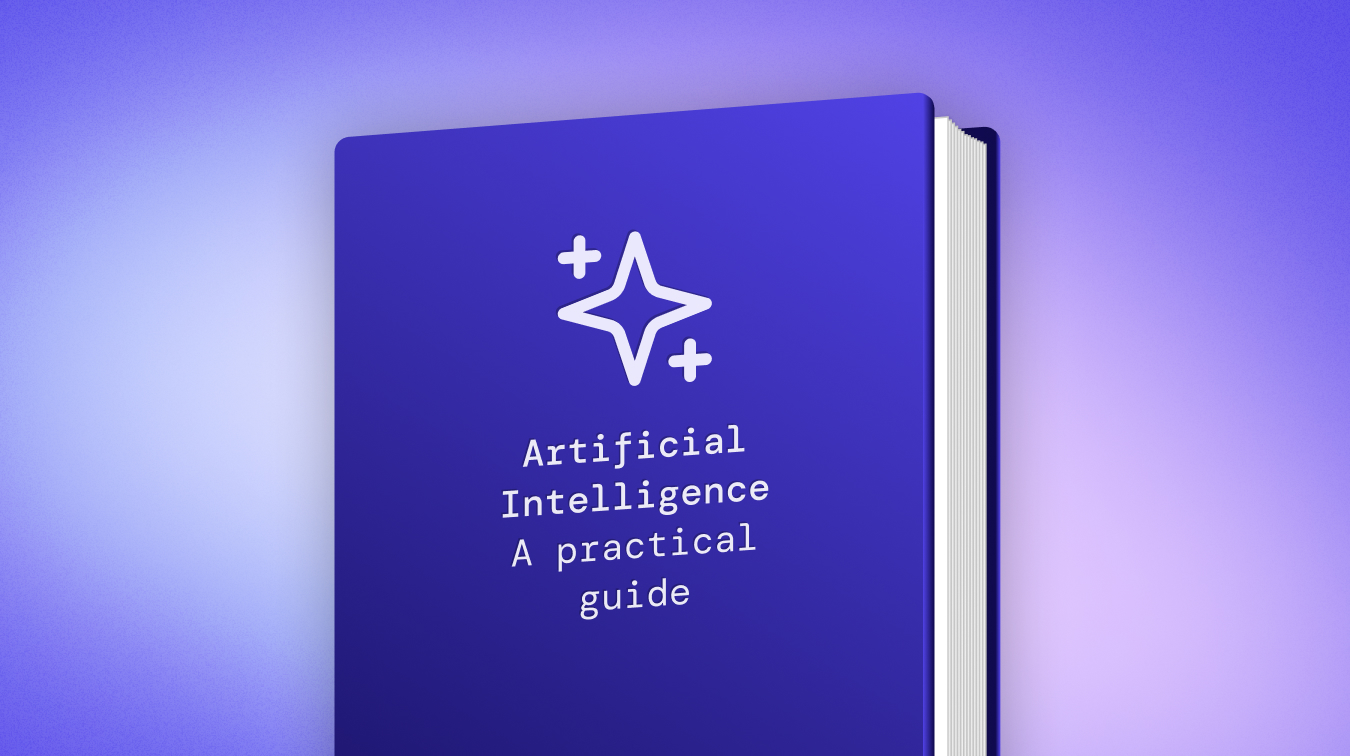In this guide we will cover the basics about AI and then take a look at the most practical and easy ways for you to leverage AI in your company.
Definitions
Before we get into it, let's take a look at the most important terms and definitions in AI. Because these terms don't all mean the same and it's important to understand the differences.
- Artificial Intelligence (AI) is the category term for all approaches in which machines imitate human intelligence and human cognitive functions. AI can be achieved through traditional software based on pre-programmed business logic or through machine learning. Yes, software-based calculator is AI as well.
- Machine Learning (ML) is an approach for achieving artificial intelligence that is based on computers learning to solve certain problems by training with large amounts of data, explicitly without manually programming certain algorithms. This is basically how we learn as humans.
- Generative AI (GenAI) is a special form of artificial intelligence that is able to generate texts, images or other media. Generative AI learns patterns from large amounts of training data and generates data with similar patterns.
- A Large Language Model (LLM) is a concrete implementation of Generative AI for human language. It is based on training with very large quantities of human language, usually from the internet. ChatGPT is an LLM.
The recent hype around AI was driven by breakthroughs in the area of Generative AI, particularly ChatGPT and others. This technology is opening up new technological opportunities to find solutions for tasks and problems that couldn't previously be solved through traditional algorithm-based business software.
How can generative AI be used in businesses?
High-level perspective
Let's start by looking at this from a high-level perspective. Generative AI gives us three new technological capabilities:
- LLMs trained on the vast content of the internet allow us to access the world's common knowledge through conversation.
- In addition, LLMs trained on proprietary data allow us to access such proprietary information through conversation.
- Finally, LLMs can reason and interpret human language (regardless of the actual topic) which in turn gives us the possibility to.
Sounds quite abstract. But when you think about it, it becomes clear that these (abstract) capabilities open up huge new opportunities to use computers and software to optimize our work processes.
Practical perspective
On a practical level we need to understand how these new capabilities can be used to optimize our work. So let's start by taking a look at the tasks that consume most of our time and resources at work:
- Searching and gathering information consumes up to 2 hours daily for knowledge and desk workers.
- Analyzing, extracting and summarizing information from existing sources.
- Generating content such as communication, graphics, or presentations.
All of the above consume a huge part of our days and pose the single greatest potential of AI for business effectiveness and individual employee productivity.
Looking at these three areas, it becomes clear that all of them only work well when the AI has access to your company's data and knowledge. Only then will the AI be able to deliver results that actually support people's work and boost productivity.
Therefore, the first task for implementing AI in your company must be to collect and organize your existing company knowledge. Unfortunately, this isn't easy at all as in most cases the information will be spread across multiple different systems and sources, and in various different formats. This is why companies that want to leverage AI are already starting internal projects for connecting and organizing internal data.
A second challenge is how companies can combine their internal knowledge with the AI systems. In most cases, companies do not want to train LLMs with their specific data because it takes long, is expensive and creates the risk of data leaking outside the organization. Fortunately, new technological concepts like Retrieval Augmented Generation (RAG) are allowing us to combine existing knowledge with LLMs for specific problem solving.
How to implement AI in my business?
If you are responsible for IT or operations in your company, you might be wondering where to start. Of course, providing ChatGPT to your workforce might already be of help. However, the full potential of AI can only be leveraged when the AI is connected to your internal data sources. Therefore, we recommend the following process:
- Create an overview of all your internal data sources, e.g. MS SharePoint, Google Drive, CRM, ERP.
- Pull together the most relevant information from your internal data sources into a single place (e.g. a central file drive).
- Select an AI provider (e.g. OpenAI) and connect their LLM with your consolidated data source.
- Rollout and train your employees on working with an LLM, particularly on designing good prompts.
This is a challenging and complicated process that requires thorough planning and execution. Fortunately, software vendors like Zive have developed turnkey solutions that come with a broad range of data integrations as well as safe and compliant AI technology so that your company can get started right away. Even though generic software solutions will not be able to cover your specific company use-cases, they will already get you 80% of the way in 20% of the time. For more company-specific use-cases you may choose to connect with the system's APIs and integrate your organized knowledge and the AI into your specific apps, workflows and processes.



